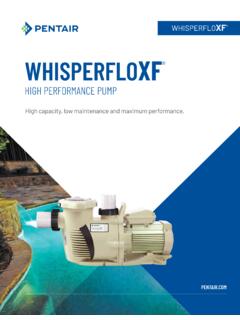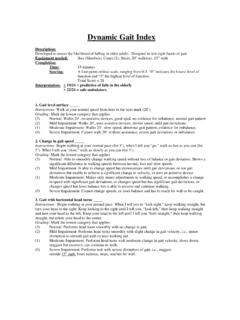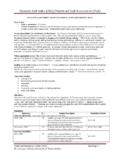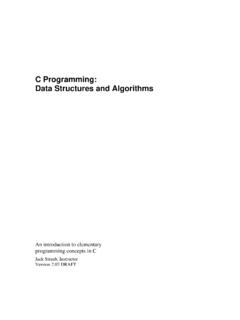Transcription of Chilled Water Pump Calculator - Engineering Pro Guides
1 Chilled Water Pump-1 Chilled Water Pump Calculator Guide Table of Contents Introduction .. 2 Units .. 2 Disclaimer .. 2 Overall Chilled Water System .. 2 Chilled Water Pump Calculator - Inputs .. 4 Fluid Information .. 4 Pipe Information .. 5 Valve & Fitting Information .. 6 Equipment Information .. 6 Pipe Expansions & Reductions Information .. 7 Chilled Water Pump Calculator - Outputs .. 7 Fluid Velocity .. 7 Reynolds Number .. 8 Friction Factor .. 8 Pressure Drop .. 9 Pressure Drop Piping & Valves/Fittings .. 9 Pressure Drop Equipment .. 10 Pressure Drop Expansions/Reducers .. 10 Chilled Water Pump Schedule .. 12 Flow Rate (GPM) .. 13 total Dynamic Head (Feet Head) .. 13 Service .. 13 Location .. 13 Pump Types .. 13 Pump Efficiency.
2 15 Pump Speed .. 16 Motor .. 16 Remarks, Additional Features .. 18 Chilled Water Pump-2 INTRODUCTION The purpose of this guide is to provide the necessary background information on the Chilled Water Pump Calculator to be able to use the Calculator and to fill out a Chilled Water pump schedule. This guide covers the overall Chilled Water system, the Calculator and the Chilled Water pump schedule. The overall Chilled Water system will help you to visualize how the Chilled Water pump fits within the overall system and will also help you to determine the hydraulically remote run for pressure drop calculations. Following the overall Chilled Water system, the inputs, outputs and references used in the Calculator will be covered. The primary purpose of the Calculator is to find the total dynamic head for use in the Chilled Water Pump Schedule.
3 Lastly, each individual item within the Chilled Water Pump Schedule will be discussed in order to give you more knowledge on how to complete the schedule for your specific Chilled Water pump application. UNITS The primary units that are used in the Calculator are United States Customary System Units (USCS). As such, this guide focuses exclusively on the USCS. However, an SI version will also be provided in the future. DISCLAIMER In no event will Engineering Pro Guides be liable for any incidental, indirect, consequential, punitive or special damages of any kind, or any other damages whatsoever, including, without limitation, those resulting from loss of profit, loss of contracts, loss of reputation, goodwill, data, information, income, anticipated savings or business relationships, whether or not Engineering Pro Guides has been advised of the possibility of such damage, arising out of or in connection with the use of this guide/software or any referenced documents and/or websites.
4 This guide and Calculator were created on the basis of helping engineers to increase their efficiency in completing calculations. However, the book and Calculator was not intended to replace the Engineering judgment necessary to interpret the results of any calculations. The engineer is still responsible for the calculations and results within the Calculator . OVERALL Chilled Water SYSTEM This guide covers the design and selection of a Chilled Water pump. The Chilled Water pump is a part of an overall Chilled Water system that often includes a chiller, piping, valves/fittings, expansion tank, air handling units and fan coil units. The Chilled Water pump is used to circulate Chilled Water in a closed system. The Chilled Water pump circulates return Chilled Water from the air handling units & fan coil units back to the chiller.
5 The chiller then cools the Chilled Water and the Chilled Water is then supplied back to the air handling units and fan coil units. Chilled Water Pump-3 The Chilled Water pump must be sized properly to circulate the correct amount of flow at the correct pressure in order to achieve proper cooling within the building. If there is insufficient flow and pressure, then there will not be enough cooling and the building may get hot during periods of high cooling load. If there is too much pressure and flow, then the electrical system will be unnecessarily burdened and if there is no speed control, then electricity may be wasted due to excess pumping. Figure 1: This figure shows an overall Chilled Water system. The Chilled Water pump circulates Chilled Water through the system. Chilled Water Pump-4 Chilled Water PUMP Calculator - INPUTS In order to best use the Chilled Water pump Calculator you should have an understanding of the inputs and how changes in the inputs will affect the output.
6 FLUID INFORMATION The fluid information required includes the fluid type, temperature, density and kinematic/dynamic viscosity. Figure 2: The fluid information section is the first set of inputs required for an output from the Calculator . Fluid Type: There are several fluid types of available for use in the Calculator , including Water , propylene glycol mixtures and ethylene glycol mixtures. If you select a fluid type from the drop down menu and a temperature, then the Calculator will automatically fill in the properties for density, dynamic viscosity and kinematic viscosity. If your fluid type is not available in the drop down menu, then you must manually input all the values into the Calculator , in order for the Calculator to work. Temperature: The temperature is used by the Calculator to automatically find the density, dynamic viscosity and kinematic viscosity from the fluid properties built-in to the Calculator .
7 If you are not using one of the drop-down fluid types, then the temperature is not necessary to get an output from the Calculator . The typical Chilled Water temperatures are shown below. You should select the lowest supply Chilled Water temperature. Supply Chilled Water : 42 F to 48 C to C Return Chilled Water : 52 F to 58 C to C Density: The density is used in the calculations to find the Reynolds Number. The Reynolds Number is used to find the friction loss coefficient. Chilled Water Pump-5 Dynamic Viscosity: The dynamic viscosity is used in the Calculator to find the Reynolds Number. PIPE INFORMATION The Calculator requires you to insert the pipe section information which includes the flow rate, pipe material, pipe type, pipe size and length of pipe. A different pipe section should be used if any of these variables are changed.
8 Figure 3: The pipe information is used to find the inner area and relative roughness of the piping. There are various pipes available for use in the Calculator but you can also add your own pipe information. The pipes built-in to the Calculator include ASTM A53 Steel (Schedule 40 & 80), ASTM B88 Copper (Type K, L & M), ASTM D2241 PVC (SDR 26) and ASTM F2389 Polypropylene (DR 9). These are the most common pipes used in Chilled Water pipe application. If you have a special case, then please use the references sheet to add in your pipe information or contact Justin via email Figure 4: This figure is a sample of the pipe information built-in to the Calculator , references tab. Each pipe material and pipe type within that pipe material have its own standard pipe sizes. For example, Schedule 40 Steel does not have a 5/8 inch pipe size.
9 When you change pipe Chilled Water Pump-6 materials and pipe types, please also change the pipe size to ensure the pipe size you want is available within the standard. The Calculator will give you an error if you select a non-standard pipe size within the pipe material & type. VALVE & FITTING INFORMATION The valves and fittings section requires you to put in the values for each fitting that are on a certain pipe section. A pipe section is defined as having the same flow rate and same pipe information. Figure 5: Inputting the valves and fittings on a piping section will help to determine the total loss through the piping section. The valve and fitting quantities are matched to 3-K values within the references tab. If you have a special valve and fitting, you can add in the 3-K values to the references tab.
10 If you don t have the 3-K values you can either choose a similar valve/fitting or you can estimate the pressure drop and add this to the equipment information section. EQUIPMENT INFORMATION The equipment section requires you to insert the flow rate and pressure drop for each piece of equipment. You should also indicate if the equipment is on the hydraulically remote run. Remember, only items listed as hydraulically remote will be used to calculate the pressure drop for the Chilled Water pump. Figure 6: The pressure loss due to equipment is specific to the manufacturer of the equipment. You should check the manufacturer product data for this information, but you should also remember that the Chilled Water Pump-7 pressure loss is specific to a certain flow rate. If your flow rate is different, then you will need to adjust the pressure drop to match your application.
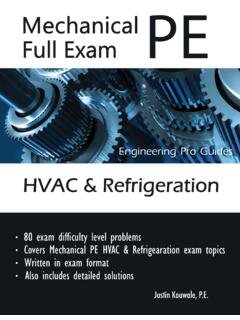
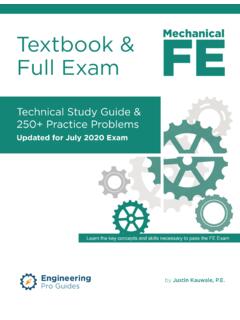

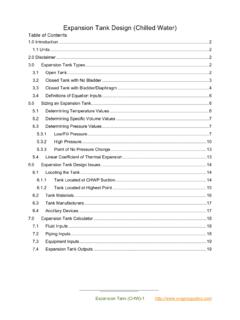
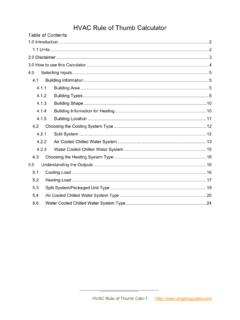
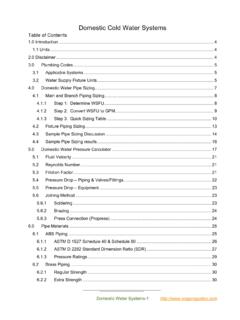
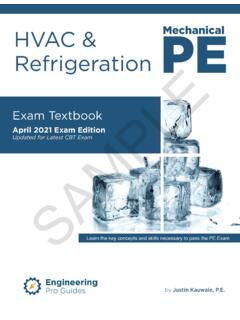


![Flow rate [m h] Total head [m]](/cache/preview/5/1/6/a/6/5/c/e/thumb-516a65ce112381e6b5b16a683026e44a.jpg)

